The entrance door separates the apartment from the street or entrance, which means that the design does not only warn unauthorized access to the dwelling, but also is the first obstacle between the microclimate of the apartment and weather conditions, the difference is very large.
Condensate on the inlet metal door in a private house is a serious problem for a variety of reasons.

Snow
Causes of condensate education
The main reason is, oddly enough, the metal door itself. Steel with all its advantages has one unpleasant feature - perfectly spends warmth. This means that compared to any other material - concrete, brick, plaster, it is steel that will most likely be the role of the cooling surface. Since, other things being equal, the temperature of the metal door will be lower.
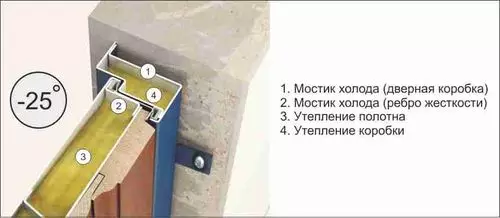
Moisture deposition mechanisms can be different.
- The main reason, almost always performs high humidity. As soon as the dampness exceeds 55%, which is not uncommon, the metal literally attracts moisture and the fog capends on the surface of the flap of water with droplets.
- The second most prevalence is the poor thermal insulation of the input structure. In this case, the difference between the temperature inside and outside becomes especially striking on the metallic sash area, which causes water precipitation.
- Cold bridges are the remaining gaps between the frame and the canvas, the door pepper, the door handle. Moisture condenses in these areas, and in winter it also freezes, destroying the material. So what to do with condensate on the inlet metal door worries many apartment owners and their own homes.
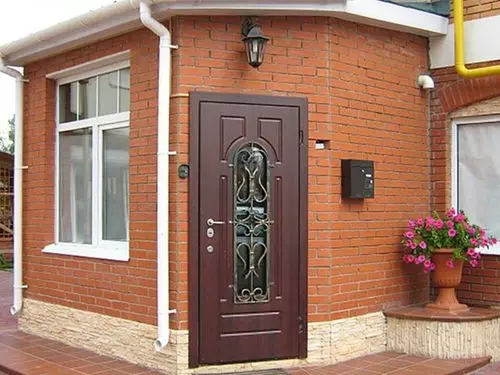
What is dangerous condensate?
At first glance, the danger is small and eliminate it there is no particular reasons. Steel used for construction is covered with zinc layer, and then - reliable powder paint that protects the alloy from corrosion. But, alas, water that sharpens the stone, copes with the metal.
Article on the topic: How to make the overlapping of the first (1) floor with your own hands
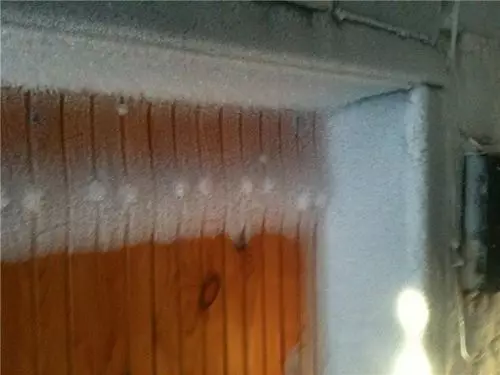
The main danger is not even the possibility of rusting the sash, although there is such a danger - sufficiently small damage in the staining layer so that the metal began to rust. But it is more dangerous that moisture with a decrease in temperature freezes, forming no surface of metal ice. The difference between the volume of water and ice acts on the powder painting, and actually on the alloy, gradually destroying both. In the photo - icing door.

How to eliminate condensate
What to do in such cases is obvious: you need to eliminate the possibility of the accumulation of moisture on the surface of the metal sash.
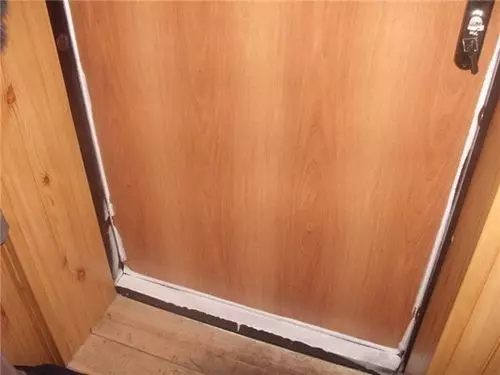
It should be immediately noted that it is not possible to avoid the thermal insulation of the formation of condensate alone: the difference in temperature inside and outside still remains, so the problem is solved otherwise.
- The arrangement of heated Tambura - warms the steel sash to sufficiently so that moisture, even settling, has time to evaporate, and did not turn into ice.
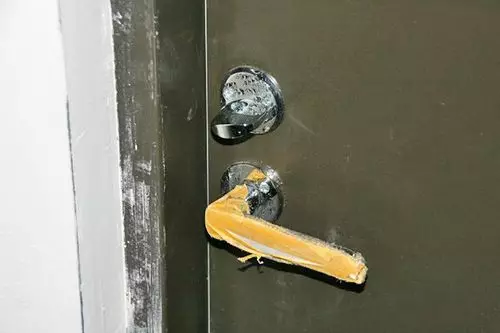
- If this option is impossible, how to avoid droplets on the inlet metal door, prompts the principle of any heating system. The damp never happens near the battery. In a private house, to eliminate times and forever the deposition of moisture, arrange the heating of the porch. The same result will give the placement of the heat curtain above the door.
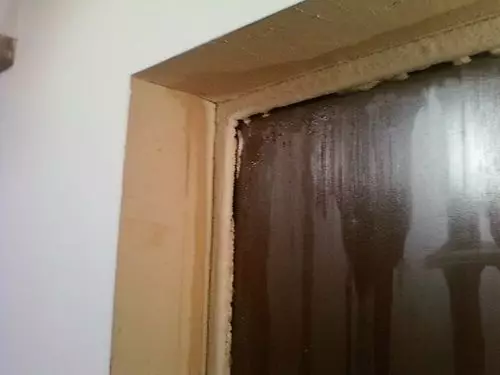
- Another way is to arrange a visor. In this case, the sash will be protected from rain and snow. This is a less reliable method, but also it significantly reduces the accumulation of water.
The video demonstrates how to make a thermal veil.
